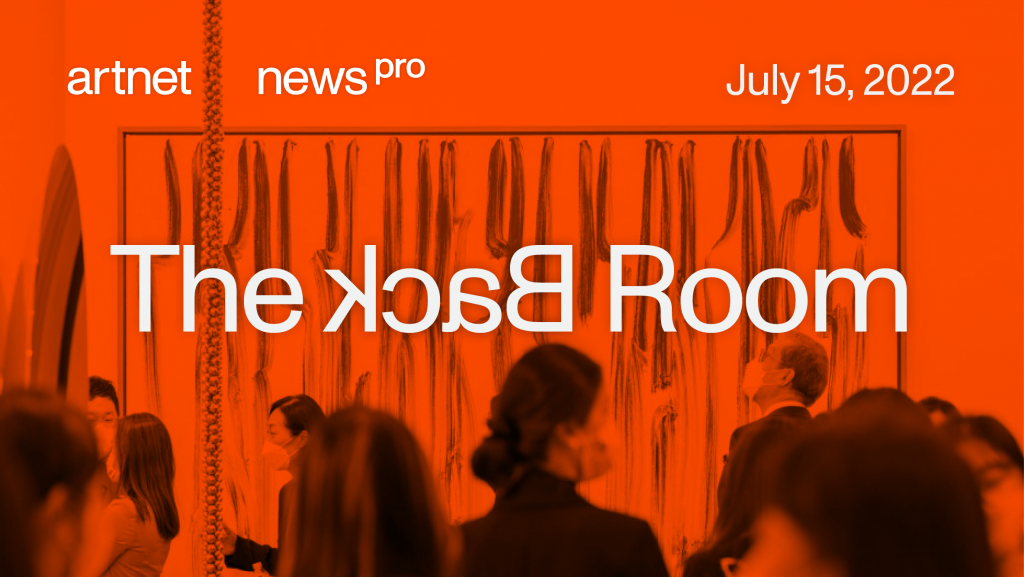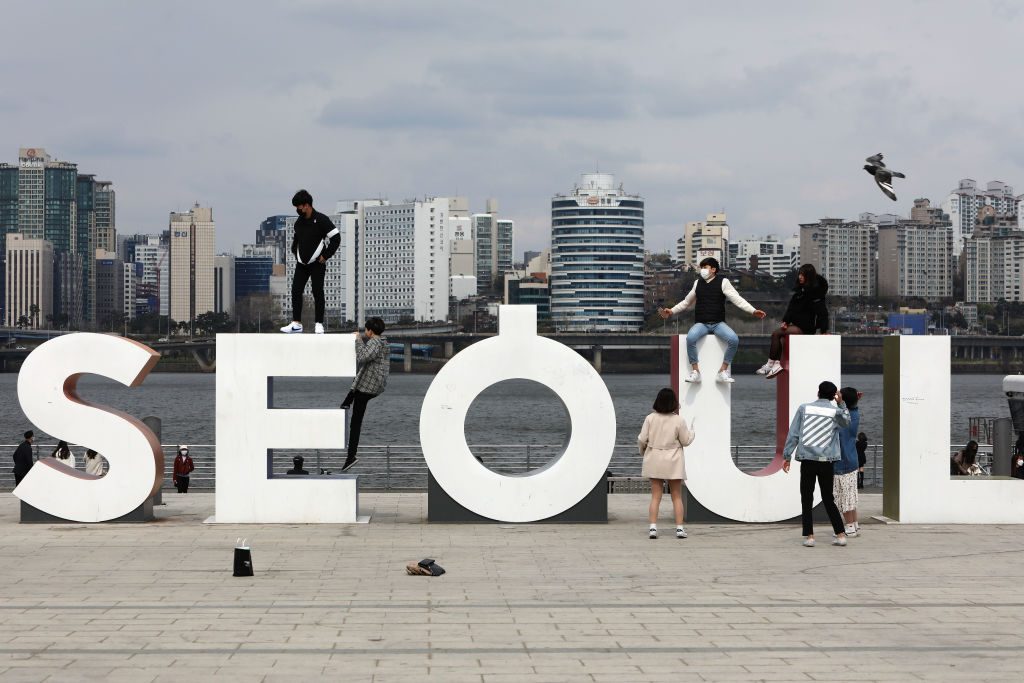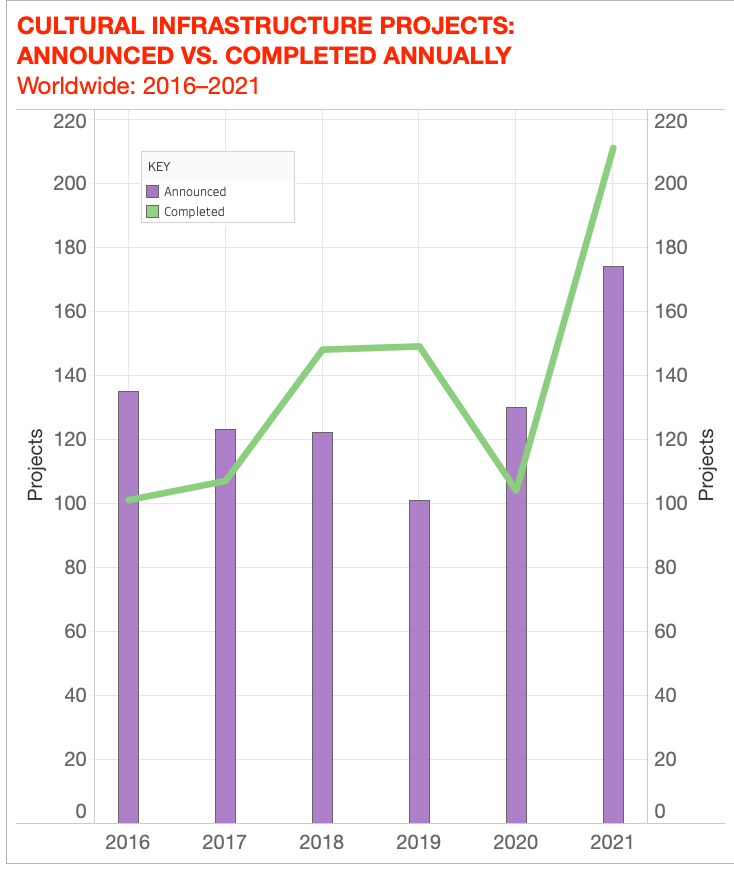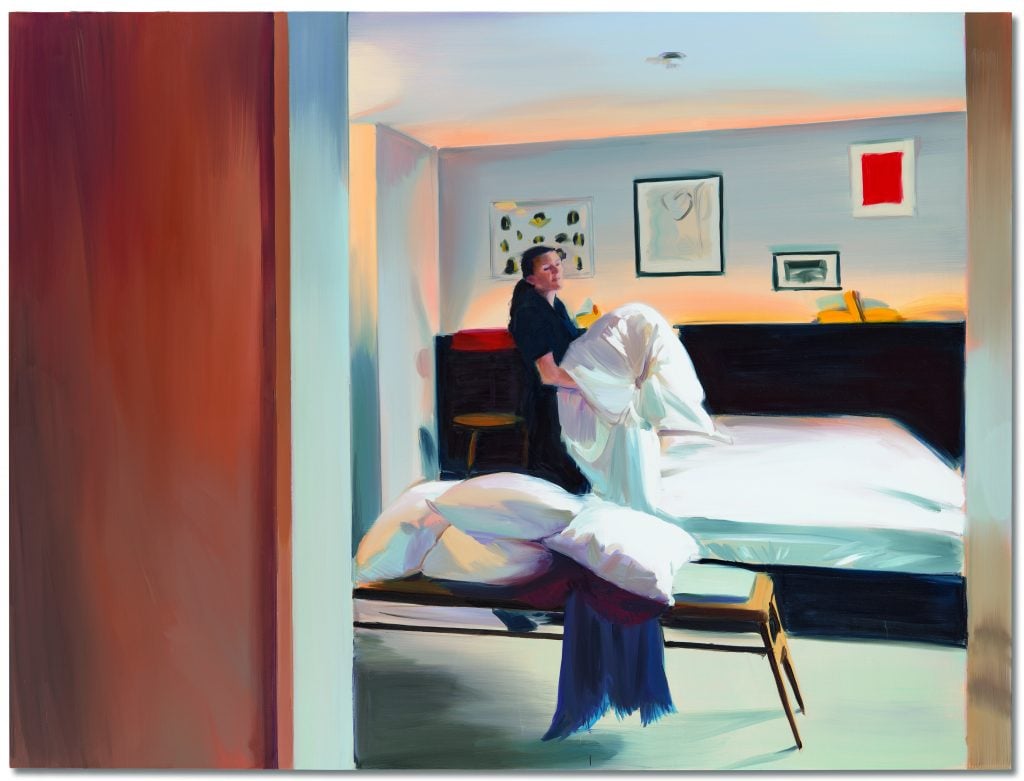The Back Room
The Back Room: Rhythm and Seoul
This week: Seoul’s global gallery scene, the culture sector’s post-COVID building boom, and Caroline Walker heats up the auction houses.

This week: Seoul’s global gallery scene, the culture sector’s post-COVID building boom, and Caroline Walker heats up the auction houses.

Tim Schneider &
Naomi Rea

Every Friday, Artnet News Pro members get exclusive access to the Back Room, our lively recap funneling only the week’s must-know intel into a nimble read you’ll actually enjoy.
This week in the Back Room: Seoul’s international gallery scene, the culture sector’s post-COVID building boom, and Caroline Walker heats up the auction houses—all in a 6-minute read (1,774 words).
__________________________________________________________________________

Seoul, South Korea, on April 12, 2020. (Photo by Chung Sung-Jun/Getty Images)
It’s mid-July, which means we’re just seven weeks away from the international art-world circuit lighting up Seoul like never before: the inaugural Frieze Seoul, the long-running homegrown fair Kiaf Seoul, and its new tech-focused sister fair, Kiaf Plus, will all welcome visitors from across the map the first weekend in September.
So too will a slate of new spaces and architectural expansions by some of the most prestigious Western galleries in the biz. In preparation for Seoul’s star turn, Andy St. Louis retraced how buy-in from global dealers has helped bring South Korea’s capital to center stage.
“The Korean contemporary art scene has long remained relatively insular and its market largely untapped,” St. Louis writes. This situation stands in stark contrast to mainland China and Hong Kong, where Western galleries began flocking in the early 2000s.
Then, in 2016, Perrotin opened a modest showroom in Seoul, followed shortly thereafter by powerhouse galleries Pace and Lehmann Maupin. The trio found “a market ripe for growth and a broad-based audience with an increasing appetite for works by foreign artists.”
Since then, the three galleries have all found success in Seoul through differing approaches…
This trio of dealers has doubled down in Seoul, too. Lehmann Maupin opened more spacious facilities in the museum-rich Hannam-dong neighborhood this March. Pace recently announced that an expansion of its South Korean compound will debut in sync with Frieze Seoul—just as Perrotin will inaugurate its second space in the Gangnam district.
Teamwork there and turmoil elsewhere played a role.
Various Small Fires, the buzzy Los Angeles-based gallery founded by Korean-American dealer Esther Kim Varet, expanded to Seoul in 2019. The city’s admirable public-health response allowed businesses to keep operating safely even after COVID struck. Varet used some of her space to enable Karma, Night Gallery, Jessica Silverman, and other dealers in locked-down nations to engage Korean audiences with works by their own artists.
Galleries that popped up in Seoul also discovered business-friendly tax breaks on art sales that rivaled those in Hong Kong—just as the Chinese Communist Party imposed a new national-security law endangering creative expression and internationalism in the latter city.
These variables helped convince more heavyweight Western galleries to choose Seoul as their first permanent Asian exhibition site, most notably…
Yes, mainly by dealers taking over spaces in unusual commercial contexts…
Do these moves position König and Peres Projects more as luxury shopping destinations than traditional white-cube galleries? Maybe so—and maybe that’s a strength, not a weakness, in Seoul.
__________________________________________________________________________
Barring a meltdown caused by forces beyond the arts, the first edition of any new top-tier art fair tends to tell us relatively little about a promising market hub’s long-term viability. Too many players with skin in the game have too much time to ensure an event roars out of the gate with strong sales across the board. (They’re always “strong” somehow!)
Frieze Seoul should be no different this September. In this sense, we’re likely to learn more about the city’s true market potential by watching how the international gallery landscape continues to develop there (or not) in the months before and after the expo.
Right now, the narrative and the new leases both heavily favor Seoul becoming the global industry’s Next Big Destination. But let’s see if the momentum keeps up for the next six to eight months, not just the seven weeks ahead.
____________________________________________________________________________
The latest Wet Paint will appear later today. Here’s what else made a mark around the industry since last Friday morning…
Art Fairs
Auction Houses
Galleries
Institutions
NFTs and More
____________________________________________________________________________

© 2022 Artnet Worldwide Corporation. Data by AEA Consulting.
Last Friday saw the release of the latest Cultural Infrastructure Index, an annual report by AEA Consulting that tracks investment in the construction of new or expanded museums, performing-arts centers, multifunction arts venues, and cultural hubs worldwide. The results capture a historic bounceback in building after the COVID shutdowns of 2020, with one caveat…
For more takeaways from the report, click through below.
____________________________________________________________________________
“I would have probably designed something that was low maintenance, one color, one material, bronze, and boring… I had just expected it all to be easier.”
—Artist Pamela Council, on how they would have re-conceived their intricate yet monumental public commission for Times Square Arts had they understood the organization would only cover the work’s $5,000 monthly storage and insurance costs for five months after its deinstallation. Council must now find a permanent home for the piece or destroy it. (New York Times)
____________________________________________________________________________

Caroline Walker, Bedding, Room 44 (2018). Courtesy Christie’s Images Ltd. 2022.
____________________________________________________________________________
Estimate: £60,000 to £80,000 ($72,306 to $96,408)
Sold for: £428,400 ($516,268)
Sold at: Christie’s London
Sale Date: July 1
This canvas from Caroline Walker’s acclaimed series on the service industry brought more than 5X its high estimate at Christie’s postwar and contemporary day sale in London earlier this month. The result set a new record for the Scottish millennial artist, bringing more attention to her months-long runup across the dealer and auction sectors.
A cinematic depiction of a hotel housekeeper changing sheets, Bedding, Room 44 displaced Walker’s A Scattering (2011) as her top result under the hammer. The latter sold for £327,600 (almost $433,000) at Phillips London in March.
Since March, 16 works by Walker have reached the auction block—nine of them during London’s summer sales cycle. Of those 16 lots, all have found buyers, and only two have failed to beat their high estimate. Combine that trend with the artist’s inaugural solo show at Stephen Friedman gallery this past April, and Walker is yet another artist to watch under age 40.
____________________________________________________________________________